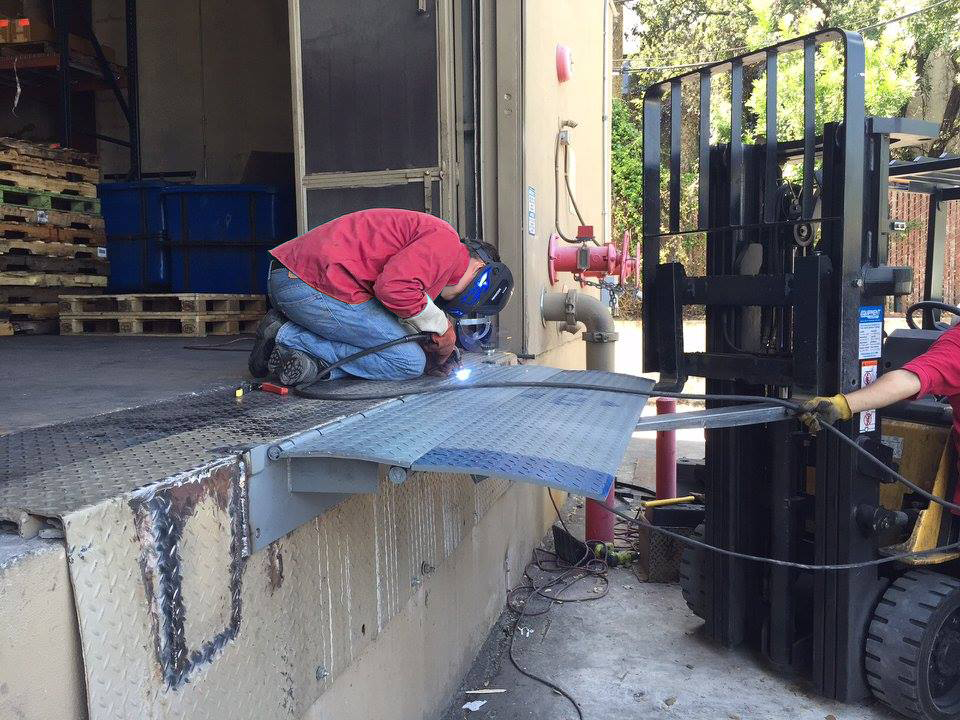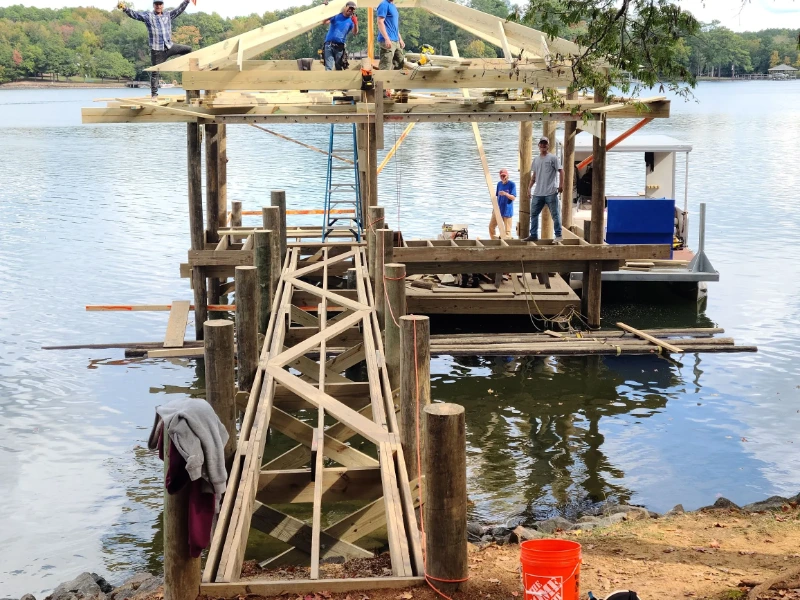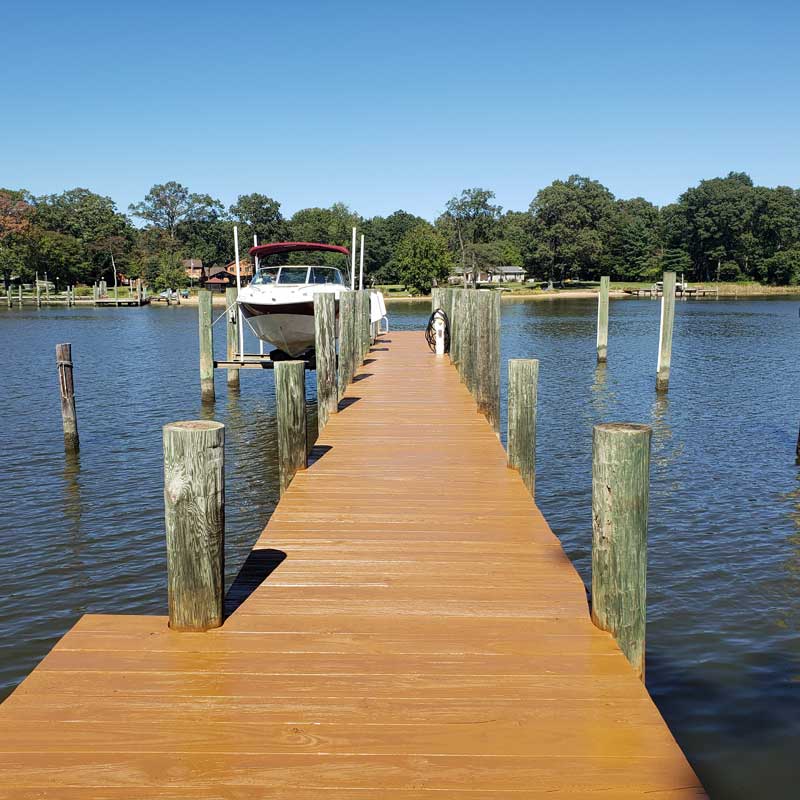Usual Problems That Result In Pricey Dock Repairs
Usual Problems That Result In Pricey Dock Repairs
Blog Article
Efficient Dock Repair Work Techniques: Guaranteeing Structural Integrity
Guaranteeing the structural integrity of anchors via reliable fixing strategies is vital for the durability and safety and security of aquatic facilities. This includes a multi-faceted method starting with comprehensive inspections using innovative modern technologies like sonar equipment and remotely ran lorries (ROVs) to identify both noticeable and concealed damages. Ultimately, picking the ideal repair service materials, such as corrosion-resistant alloys and composite materials, is crucial for durability. Architectural reinforcement methods, including the implementation of cross-bracing systems and load-distribution plates, play a vital role in mitigating stress and anxiety factors. Nevertheless, the importance of these strategies ends up being evident when discovering sophisticated repair work approaches and preventative upkeep techniques.
Evaluating Dock Damages
Examining dock damages is a crucial initial step in making certain the structural honesty and safety and security of any kind of docking facility. This preliminary analysis involves an extensive examination to recognize both concealed and noticeable problems. Trick aspects to analyze include the dock's foundation, pilings, decking, and hardware. Each element needs to be looked at for indicators of wear, rot, deterioration, or various other forms of degradation that could compromise the structural integrity.
Structural designers or certified assessors typically perform these assessments using specialized tools and strategies. As an example, underwater evaluations might employ finder tools or from another location operated cars (ROVs) to discover immersed damages. Over water, aesthetic evaluations are matched by using dampness meters and various other diagnostic devices to discover underlying issues not instantly noticeable to the naked eye.

Choosing Repair Work Materials
Picking the ideal repair materials is a pivotal step in the dock remediation process, one that directly influences the durability and efficiency of the repaired structure. Material choice need to be driven by aspects such as ecological problems, load-bearing demands, and compatibility with existing dock elements. For example, wood is a standard option for docks because of its natural resilience and aesthetic allure. Choosing the right kind of timber, such as pressure-treated lumber or naturally rot-resistant species like cedar or teak wood, is critical to hold up against water environments.
In addition to timber, composite materials are significantly prominent due to their durability and reduced maintenance needs. Composites, typically made from a mix of plastic and wood fibers, use outstanding resistance to rot, pests, and UV damage. For steel docks, picking corrosion-resistant alloys such as galvanized steel or marine-grade light weight aluminum is important to protect against corrosion and guarantee architectural stability in saline water conditions.
Epoxy materials and marine-grade sealers are vital for repairing fractures and securing joints, offering a water-proof barrier and enhancing the dock's general toughness. By carefully selecting top notch products, dock repairs can accomplish resilient outcomes, consequently guarding against future degradation and ensuring risk-free, reliable use.
Architectural Reinforcement Strategies
Effective architectural support strategies are essential in guaranteeing the stability and longevity of dock repair services. One fundamental method entails using steel or composite reinforcement bars (rebar) within concrete frameworks. Rebar offers added tensile strength, stopping cracks and distributing lots extra equally. This technique is particularly effective for anchors subjected to hefty loads or extreme ecological conditions.
One more vital method is the application of fiber-reinforced polymers (FRP) These materials supply high strength-to-weight proportions and outstanding resistance to corrosion, making them excellent for enhancing concrete or wooden anchors. FRP can be applied in strips or sheets and adhered with epoxy resins to boost architectural integrity.
Supporting and anchoring systems also play a crucial duty in structural support. Cross-bracing, utilizing metal or wood beams, can neutralize lateral view it pressures, minimizing persuading and activity. Securing systems, such as helical piers or driven stacks, provide a steady foundation by moving loads to much deeper, more secure soil layers.
Last but not least, the combination of load-distribution plates can aid distribute weight extra uniformly throughout the dock's surface, mitigating local stress factors. These methods jointly guarantee that anchors remain risk-free and durable, with the ability of standing up to the rigors of their operational setting.
Advanced Repair Techniques

One more sophisticated method involves undersea welding, which permits fixings to be performed without the demand to dewater the location. This technique is especially beneficial for addressing architectural issues in submerged dock parts, ensuring minimal disruption to procedures. Improved welding techniques, paired with robotic systems, supply precision and dependability, consequently extending the life expectancy of the dock.
Additionally, cathodic protection systems are executed to stop corrosion in metal dock structures. By utilizing sacrificial anodes or amazed existing systems, these methods properly minimize the electrochemical processes that lead to product wear and tear.
Lastly, progressed monitoring technologies, such as architectural health and wellness monitoring (SHM) systems, give real-time data on the condition of dock frameworks. These systems enable aggressive find here maintenance and prompt interventions, ultimately making certain the long-lasting architectural stability of the dock.
Upkeep and Avoidance
Maintenance and avoidance are essential principles that underpin the durability and safety of dock structures. Normal assessments are paramount, permitting early detection of damage, potential weak points, and environmental effects. An aggressive method, entailing routine checks for deterioration, rot, and structural shifts, minimizes costly repair services and prolongs the dock's operational life.
Safety nets must consist of applying protective layers to metal elements to safeguard versus rust and utilizing cured timber to resist decay. In addition, ensuring proper drain and air flow can protect against water accumulation, which is a typical reason for architectural degradation. Incorporating high quality products and sticking to supplier standards during construction and repair service stages additionally play crucial roles in enhancing toughness.

Training personnel in dock maintenance ideal techniques makes sure constant application of safety nets. Leveraging technological breakthroughs, such as drones for assessments and sensors for real-time monitoring, can further enhance upkeep efforts. By prioritizing upkeep and prevention, dock proprietors can make sure structural integrity, functional security, and cost-effective management over the dock's life-span.
Final Thought
Finally, keeping the structural honesty of marine facilities requires comprehensive dock fixing techniques. Thorough examinations utilizing advanced devices uncover both noticeable and concealed damages, while the selection of proper repair products improves durability. Carrying out architectural reinforcement approaches addresses tension points successfully. Advanced fixing methods, paired with regular maintenance methods, ensure the dock stays secure and functional under diverse environmental problems. here are the findings Taking on these strategies dramatically extends the life expectancy and functionality of aquatic facilities.
Making sure the structural stability of docks via reliable fixing techniques is paramount for the longevity and safety of marine facilities.Selecting the appropriate repair work materials is a pivotal step in the dock restoration process, one that straight affects the long life and efficiency of the repaired structure.Effective structural support strategies are essential in making certain the security and durability of dock repair services. By prioritizing maintenance and avoidance, dock proprietors can make sure structural integrity, functional safety and security, and economical administration over the dock's life expectancy.
In conclusion, keeping the architectural stability of marine centers requires comprehensive dock repair strategies.
Report this page